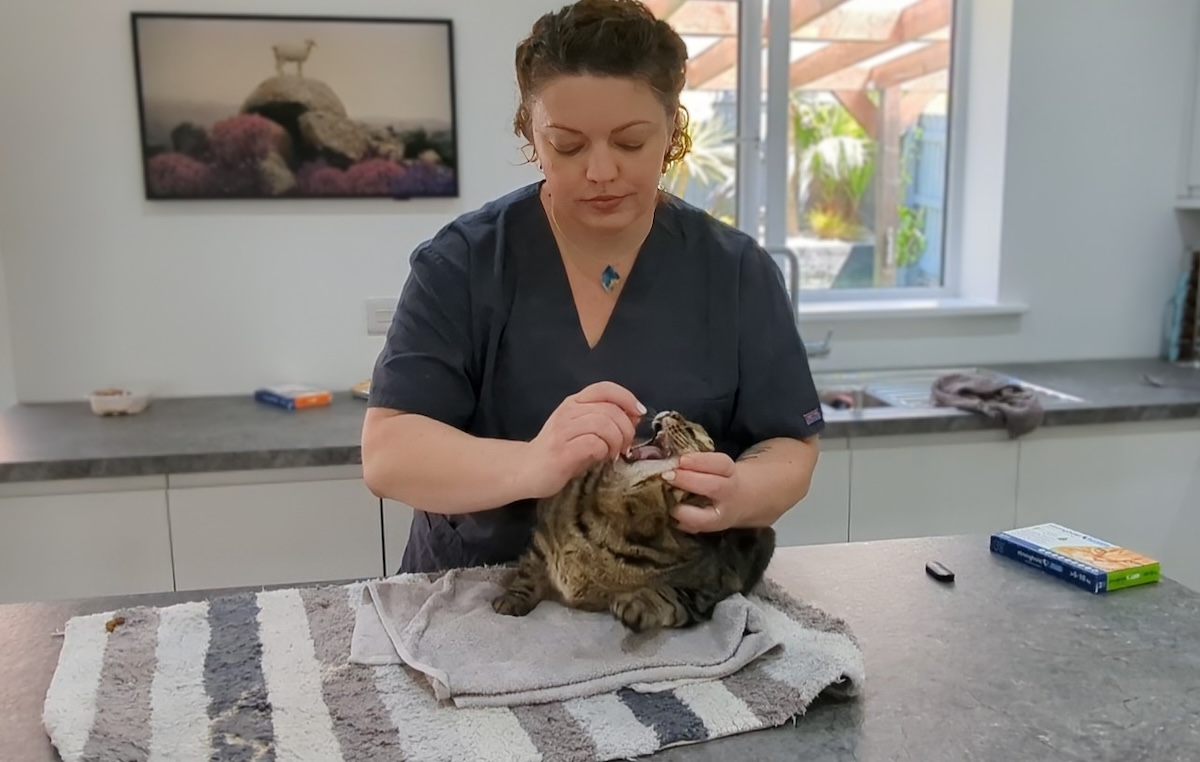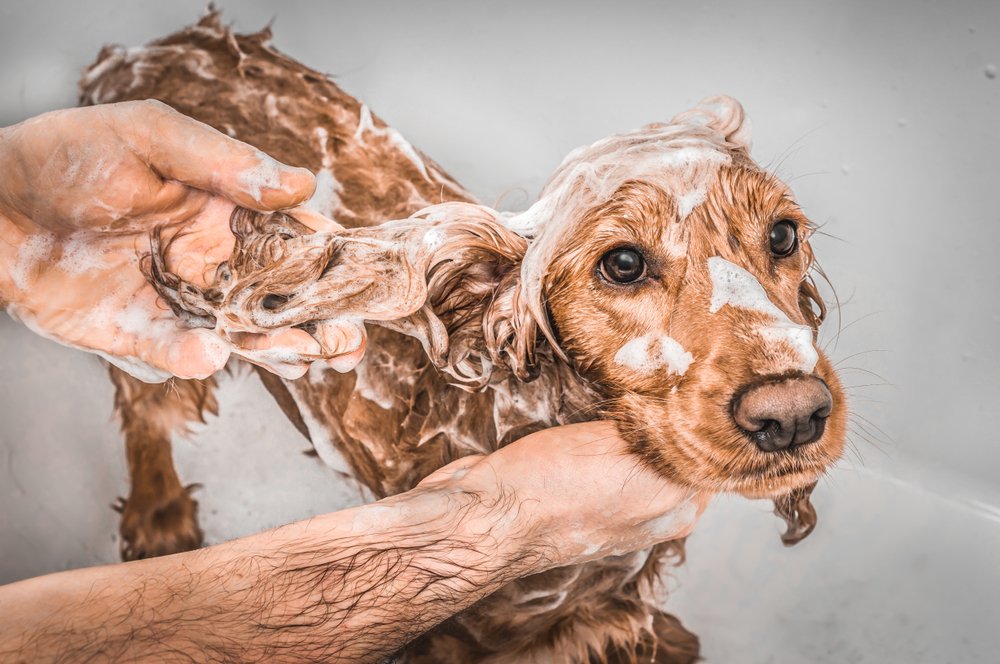
The information is current and up-to-date in accordance with the latest veterinarian research.
Learn more »
Hi, I’m Dr. Karyn! Read my introduction to learn more about me and meet my five hilarious cats: Clutch, Cyril, Alex, Zelda, and Zazzles.
Whether it’s a worming tablet, flea treatment, or a course of antibiotics, trying to medicate your cat is not always easy, and when I set out to create this guide, I thought I’d have the ideal model in my easygoing feline, Clutch. Boy, was I wrong! On the plus side, however, he did provide us with some great examples of how to cope with an uncooperative patient!
Some things I have learned about medicating cats, both my own, and my patients:
Trim claws first – at least if they do object, they’re doing it with short talons!
Make them feel comfortable and secure – choose a location they feel happy in and place a towel or non-slip mat underneath them.
Cats aren’t stupid – if the medication tastes awful, they won’t eat it in their food.
4 hands are better than 2 – if possible, get someone to help you.
Confident handling is essential – check out my previous post on How To Safely Restrain Your Cat for more tips and tricks.
Eye Drops
Zazzles being very cooperative for her eye drops
The trick with giving eye drops is to come from behind the head rather than front on – this is much less confrontational for your cat. Use the heel of the hand holding the drops to pull the lower eyelid down whilst using the other hand to steady the back of the head.
Clutch really let the team down on this one! He, like many cats, was not tolerant of eye drops at all. But, it gave me the chance to use the technique I developed for my Chihuahua, Ned. I use a tiny bit of cotton wool and wet it with the eye drops, enough to ensure that the drops will drip into the eye as I wipe the cotton wool over the eyelids. Clutch may not have loved this either, but it allows you to get the drops right into the eye rather than trying to ‘point and shoot’. Just be aware that you will go through your eye drops more quickly with this technique.
Spot-ons
Alex’s ginger fur is ‘spot-on’!
A lot of people get preoccupied with parting the fur and making sure they can see the skin before applying flea products. Yes, it is important that the product be applied to the skin, but as long as you get the nozzle through the fur to the skin, you can be quite sure it’s reaching the right place. You will always get some of the liquid on the fur, so be aware that this stuff can leave permanent oily marks on clothes, walls, and furniture!
Liquids and Pastes
Though I am loath to use towel wrapping on cats, Clutch once again proved to be the most difficult patient! Although he keeps his claws sheathed, he is very good at pushing me away and wriggling free, so he became our towel-demo boy.
When giving liquids and pastes to your cat, you need to tip the head back as far as you can, as this takes a lot of the strength away from the lower jaw. You need to direct the syringe towards the back of the tongue, but don’t shoot the liquid out too quickly.
Tablets
*Groan*
We all hate giving our cats tablets. Even the ones that claim to be palatable, rarely are. Here are my hot tips for giving tablets:
If they taste awful, food is probably not going to hide them, and crushing them into food will only make them reject a larger amount of food.
Hiding medication in food only works if the tablets are flavorless or not bitter.
Gelatine capsules (vegan alternatives are available) are a great way to turn multiple tablets into a single medication, and come in a range of different sizes.
Pill givers and pill putty are lifesavers!
Pill givers are a lifesaver!
If you need to get a tablet down your cat’s throat, you need to get it over the back of the tongue. I can guarantee that anything short of that will result in a failure, even if you don’t realize it at the time. Holding their mouth closed or rubbing their throat will just mean that the tablet that gets spat out later is more sticky.
Here’s The Real Tip
If you really struggle with medicating your cat, speak to your veterinary practice. You’ll be amazed at how helpful they can be, from showing you different ways to get those medications in, looking for alternative formulations, or even giving your cat the medication for you.
Don’t be shy – we’re here to help!
To see these tips in action – along with Clutch making me look foolish – check out the video.






